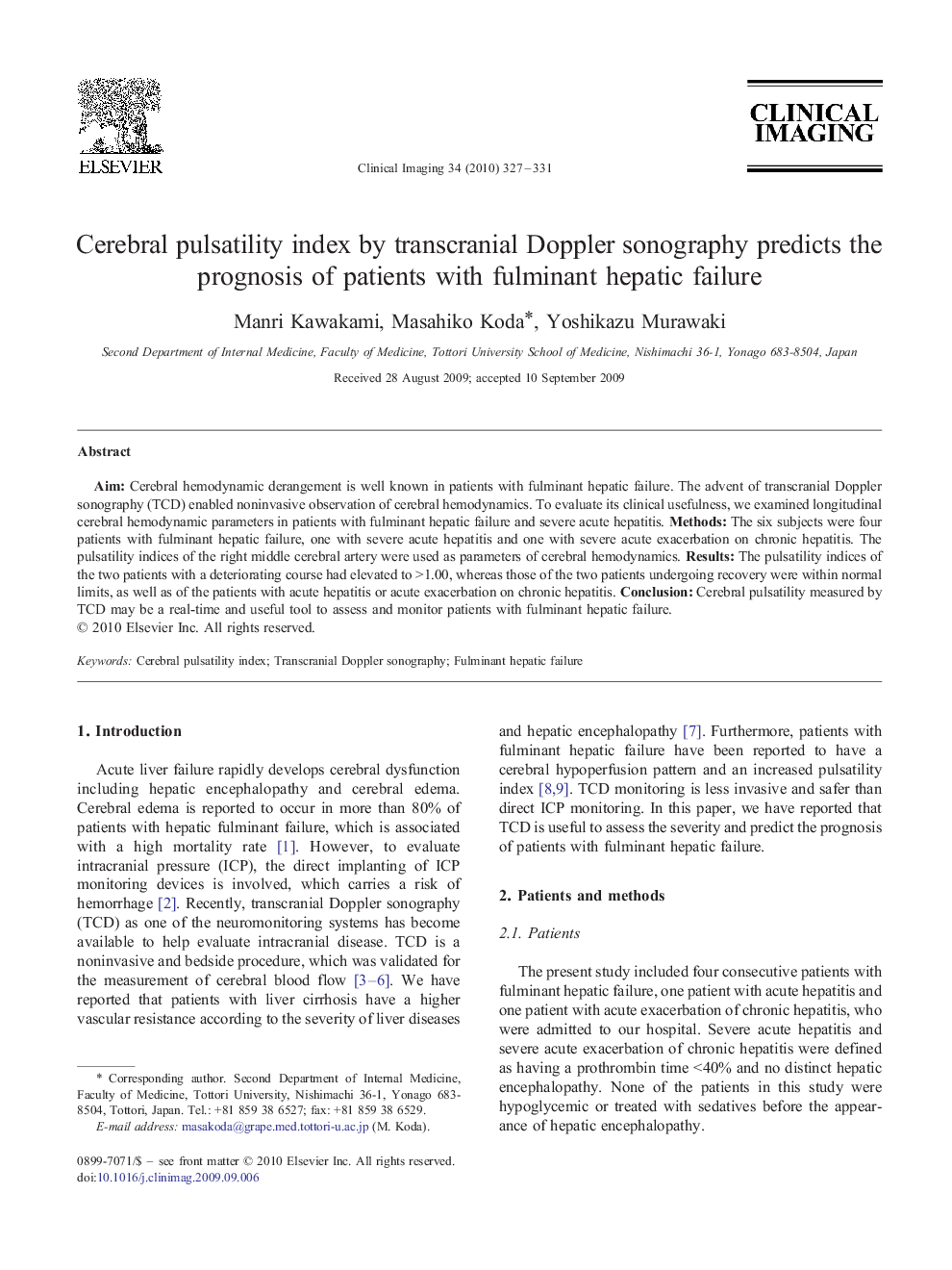| Article ID | Journal | Published Year | Pages | File Type |
|---|---|---|---|---|
| 4221952 | Clinical Imaging | 2010 | 5 Pages |
AimCerebral hemodynamic derangement is well known in patients with fulminant hepatic failure. The advent of transcranial Doppler sonography (TCD) enabled noninvasive observation of cerebral hemodynamics. To evaluate its clinical usefulness, we examined longitudinal cerebral hemodynamic parameters in patients with fulminant hepatic failure and severe acute hepatitis.MethodsThe six subjects were four patients with fulminant hepatic failure, one with severe acute hepatitis and one with severe acute exacerbation on chronic hepatitis. The pulsatility indices of the right middle cerebral artery were used as parameters of cerebral hemodynamics.ResultsThe pulsatility indices of the two patients with a deteriorating course had elevated to >1.00, whereas those of the two patients undergoing recovery were within normal limits, as well as of the patients with acute hepatitis or acute exacerbation on chronic hepatitis.ConclusionCerebral pulsatility measured by TCD may be a real-time and useful tool to assess and monitor patients with fulminant hepatic failure.
